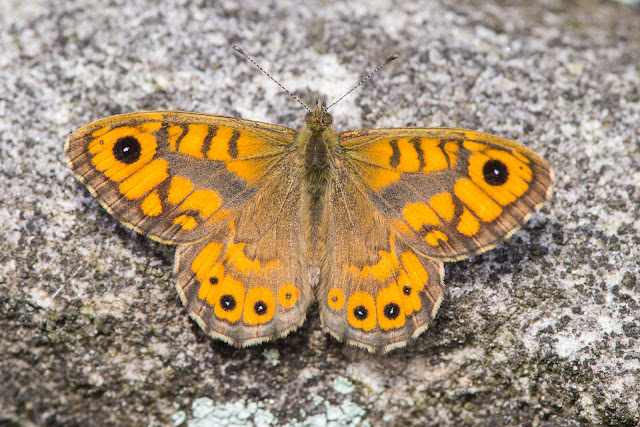I've often come across it on the ground on the moors where it forms a very slipper mass in the autumn, also known as dog vomit slime mold, but I've never seen such a bright yellow example before.
 |
| Yellow Slime Mold |
 |
| Yellow Slime Mold |
 |
| Ruddy Shelduck - probably adult female |
 |
| Osprey probably adult female |
 |
| Wall butterfly |